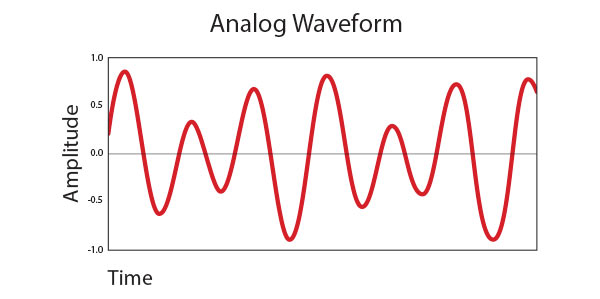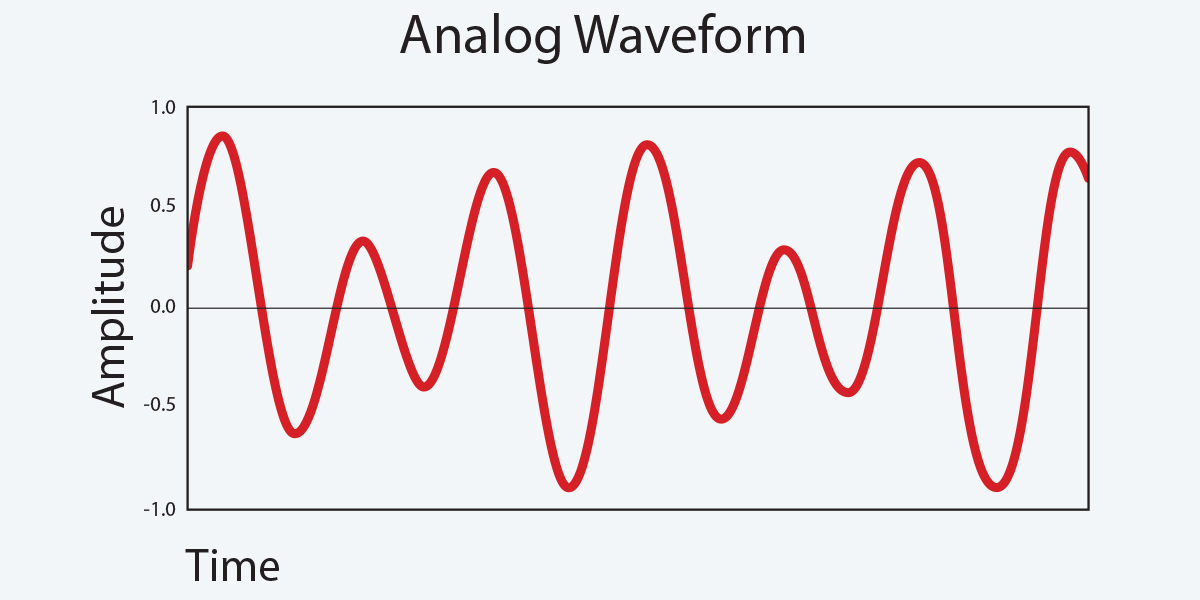Understanding Digital Audio Sampling
The sound that we hear is the result of vibrations traveling through the medium of air. The molecules of the air care compacted or rarefied in a one to one relationship with the original source sound waveform. The sound is collected by your outer ear (the pinna) and sent down the ear channel where it meets the tympanic membrane or your eardrum. The tympanic membrane is a cone-shaped, thin membrane that separates the external part of our ear from the middle ear. Its job is to transmit the sound from the air to the auditory ossicles (the three bones called the hammer, anvil, and stirrup) and inside the middle ear, and then to the oval window in the fluid-filled cochlea. The tympanic membrane converts and amplifies vibration in air to vibration in fluid. The malleus bone bridges the gap between the eardrum and the other auditory ossicles. There is a really great animation on how we perceive sound at the blausen website.
The movement of the tympanic membrane mirrors the changing sound pressure waves reaching the outer ear and can be captured by recording the position of the membrane over time. This is essentially what the groove of a vinyl LP looks like under a magnifying glass or microscope. The graphic below shows a periodic waveform of a sound.
Figure 1 – An amplitude vs. time graph showing an analog audio waveform. [Click to enlarge]
This is the perfect illustration to show how the changing air pressure and be converted and stored as a physical groove in a piece of vinyl or lacquer. Analog tape is not so neat. The storage of the analog waveform is represented by changes in the magnetic orientation of “domains” in the oxides of the tape. There are special viewers that let engineers see the distribution of tracks on a tape but I’ve never seen the actual waveform.
Analog recording can be quite good. A first generation analog tape without noise reduction can capture frequencies above human hearing (20 kHz) and dynamics equal to about 72 dB, which is a far cry from real life. But since most music performances don’t eclipse 72 dB (or even less) then music reproduction doesn’t suffer. Where analog recording suffers is from the inherent noise, dirt, excessive magnetization on guides and other metal parts, and other mechanical issues like wow and flutter. Tapes shed some of their oxide every time it passes over the tape heads…play a tape dozens of times and the high end starts to diminish.
And there is the loss of signal integrity and increased noise that happens whenever an analog signal is copied. This is referred to as generation loss and is equal to about 3 dB per copy.
Digital audio doesn’t attempt to store the actual waveform. Digital sampling slices the continuous waveform into a large number of slices according to a very precise clock. Digital sampling doesn’t attempt to store the actual waveform. Instead, the digitization process takes very precise measurements, stores them a digital “blueprint”, and then reconstructs the analog waveform upon playback. And believe it or not it works like a charm.
We’ll see more soon.



Your description of the physiology of the ear is pretty accurate. For completeness: The middle ear (tympanic membrane, middle ear cleft and ossicles) act as a transformer to amplify sound as a compensation for the air-water interface at the oval window of the inner ear. The tympanic membrane is responsible for inverting the waveform and 17 db of amplification (effective surface vs. that of the oval window). The other 3 db are provided by the mechanical leverage of the ossicles. The inner ear is responsible for conversion of the analog waves in the perilymph which deflect hair cells to release electrical signals (? digital) up the acoustic nerve to the temporal cortex. So in a way, we each have our own analog to digital converters.
The amplification aspect of the ossicles is interesting. Thanks for the additional details.
The electrical signal on the auditory nerve is digital. It is similar to PDM encoding.
That may be the only PDM audio I’ll ever accept.
It’s similar to PDM, but one big difference is that it is a set of PDM like signals with each signal centered on the amplitude of a specific frequency.
“It’s similar to PDM, but one big difference is that it is a set of PDM like signals with each signal centered on the amplitude of a specific frequency.”
To be more precise, a set of 30,000 simultaneous ‘PDM-like’ streams, delivering some 18 million nerve impulses per second to the brain stem. Per ear.
You leave us hanging worse than a daytime soap opera. LOL
Sorry, Sal…